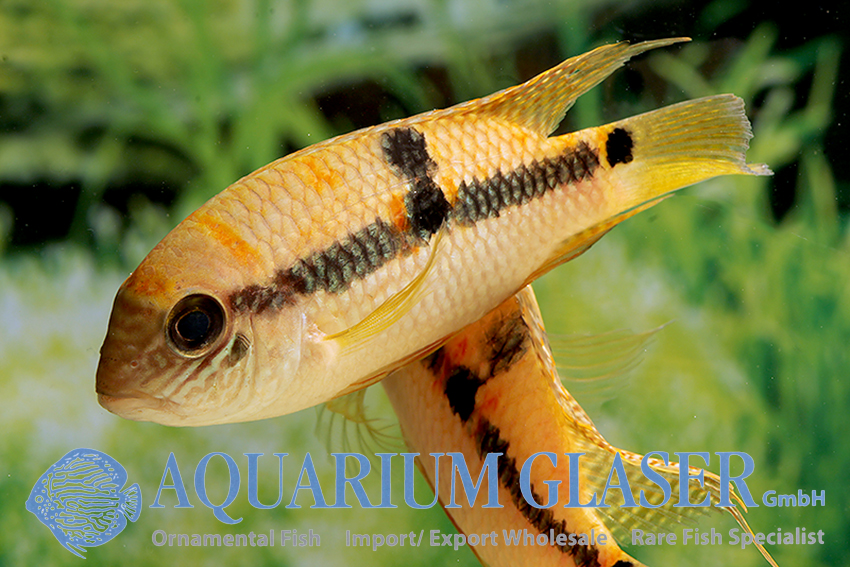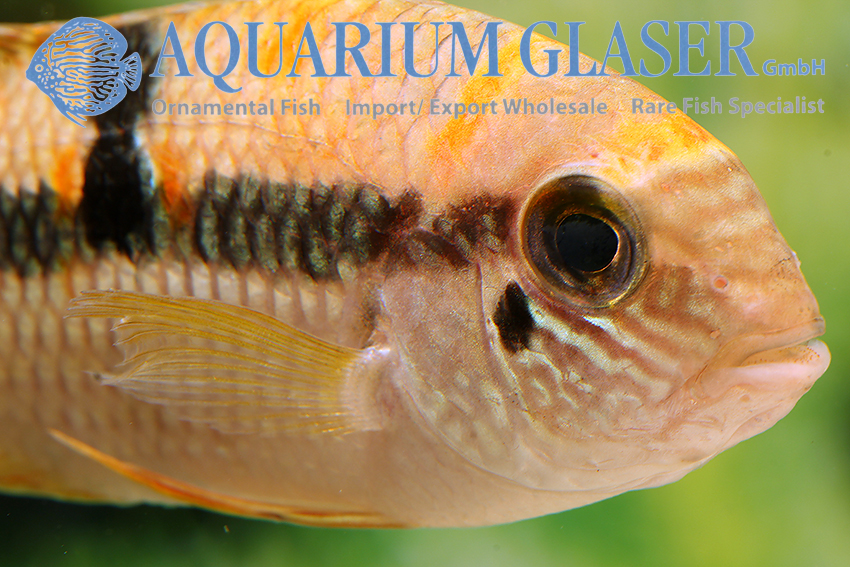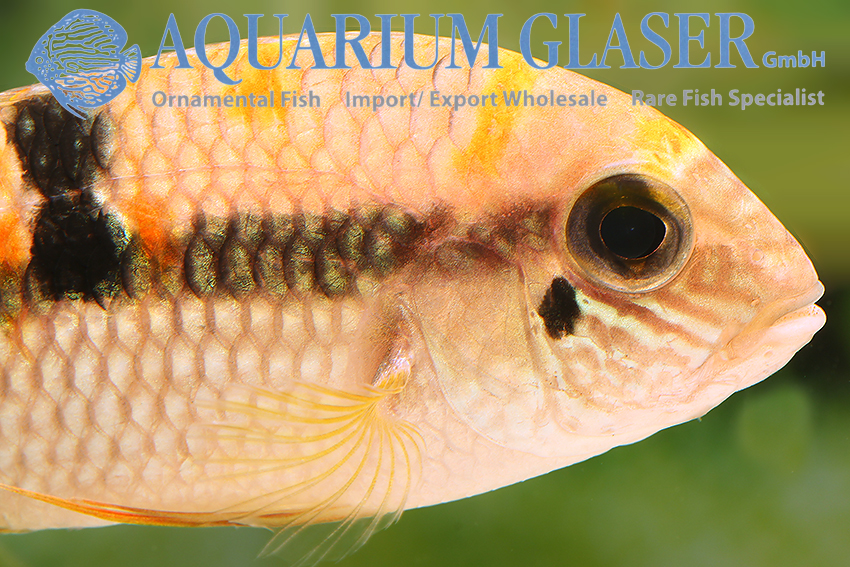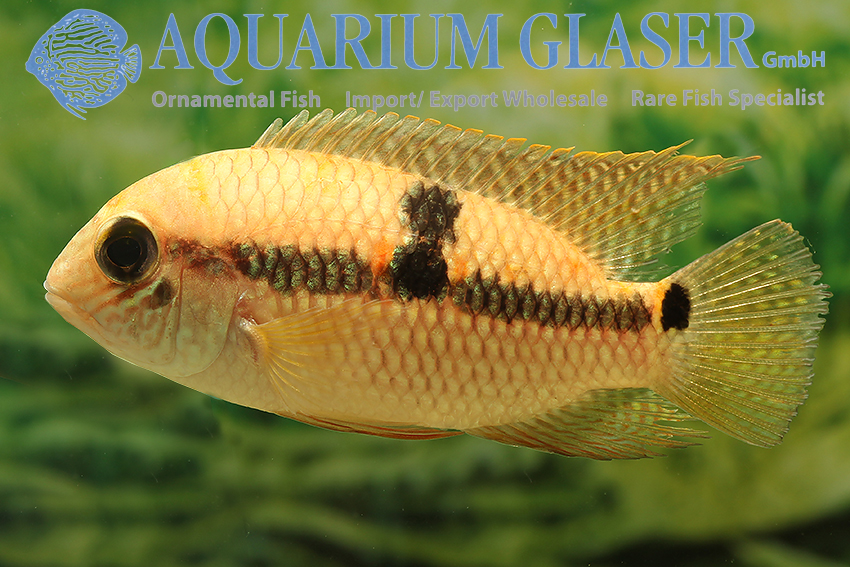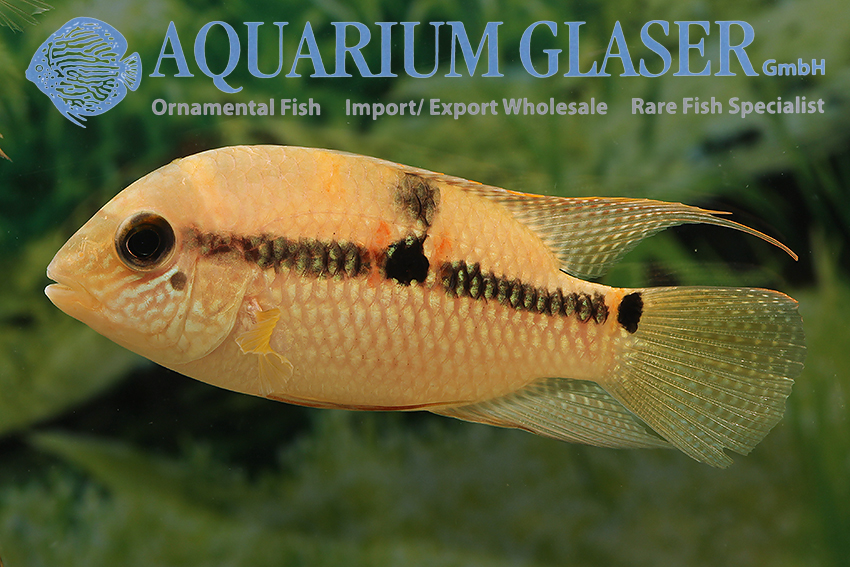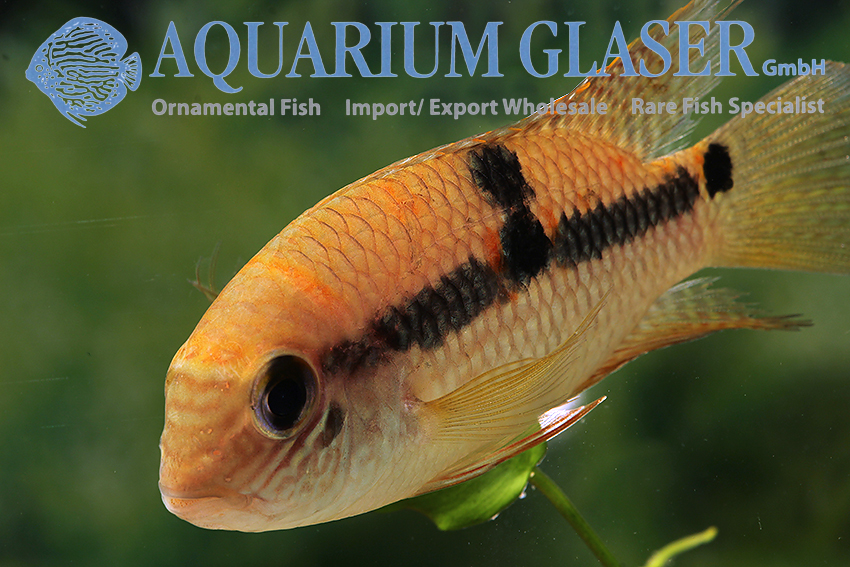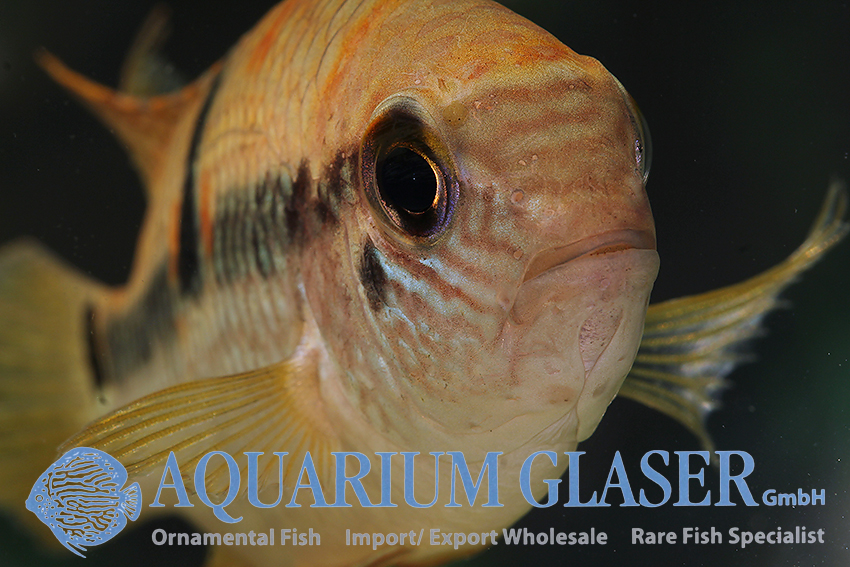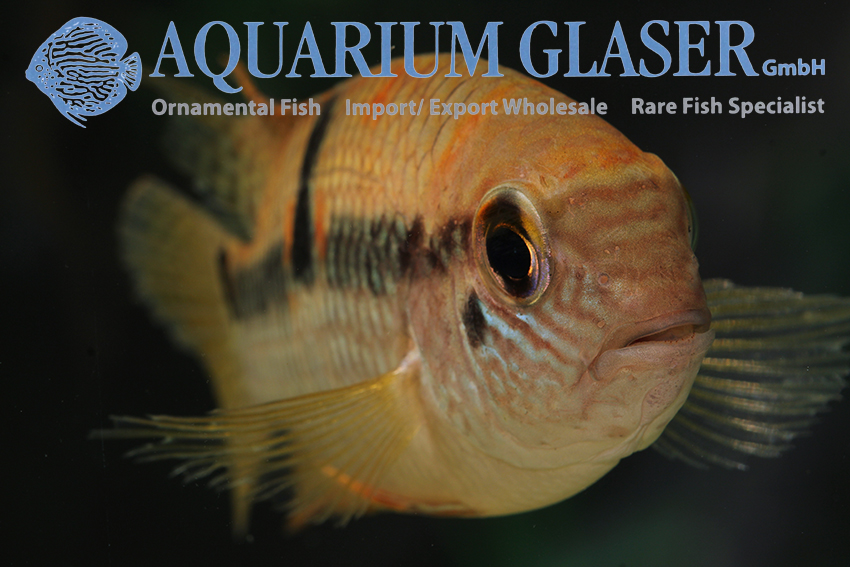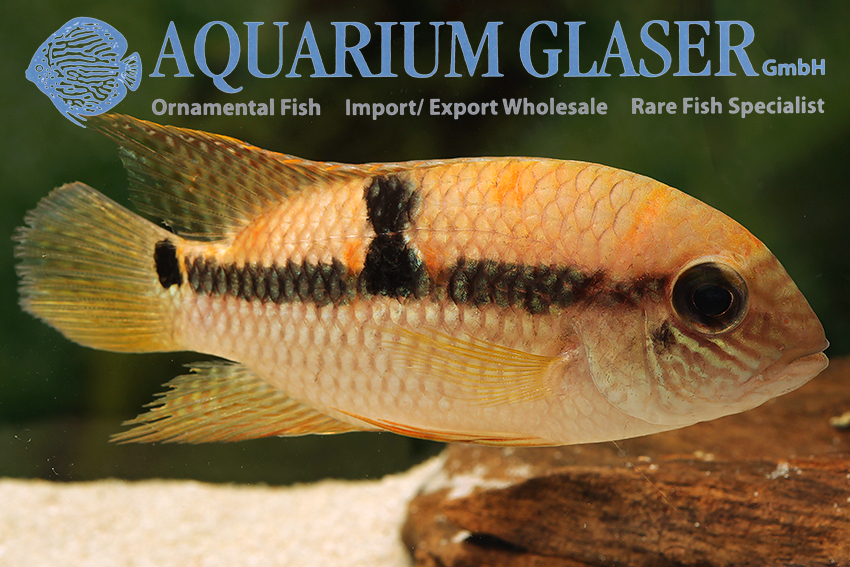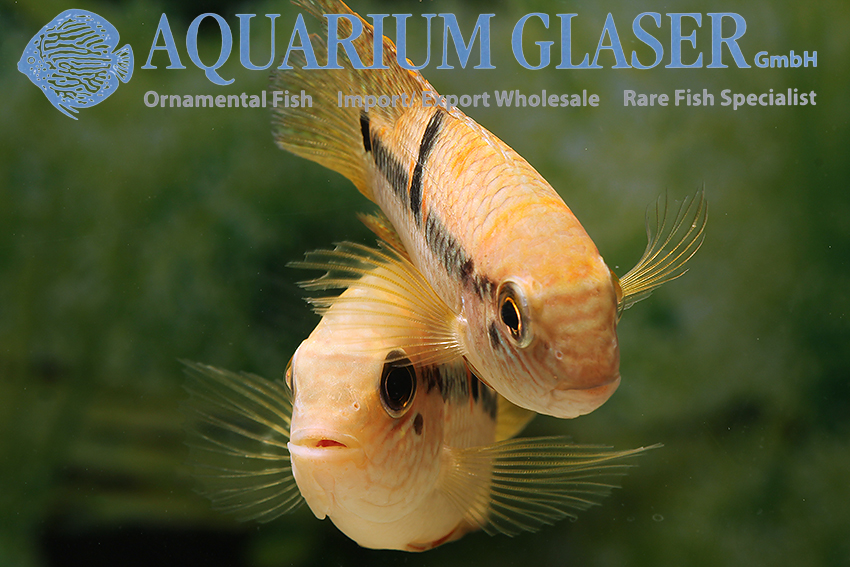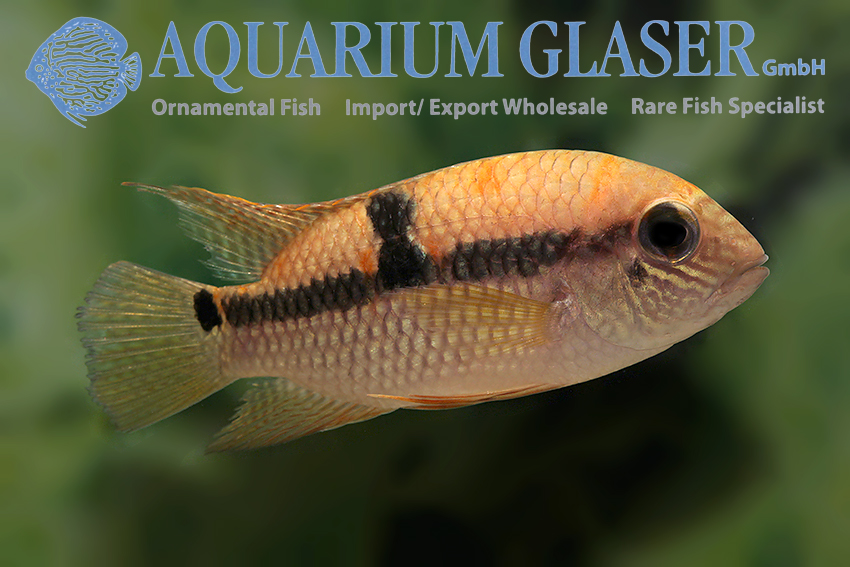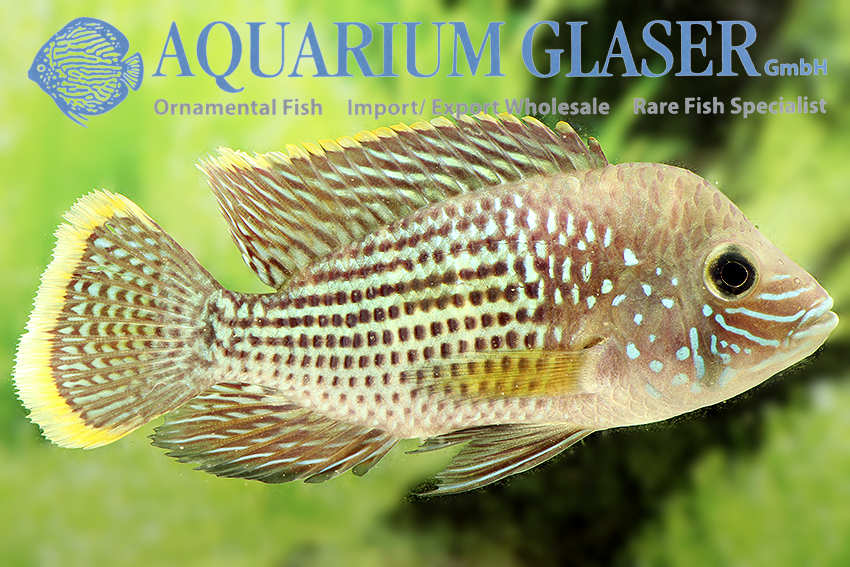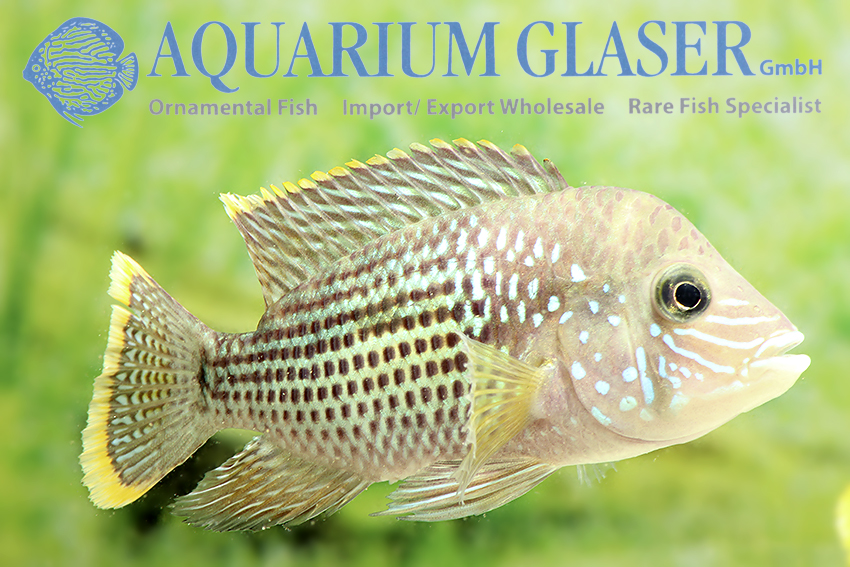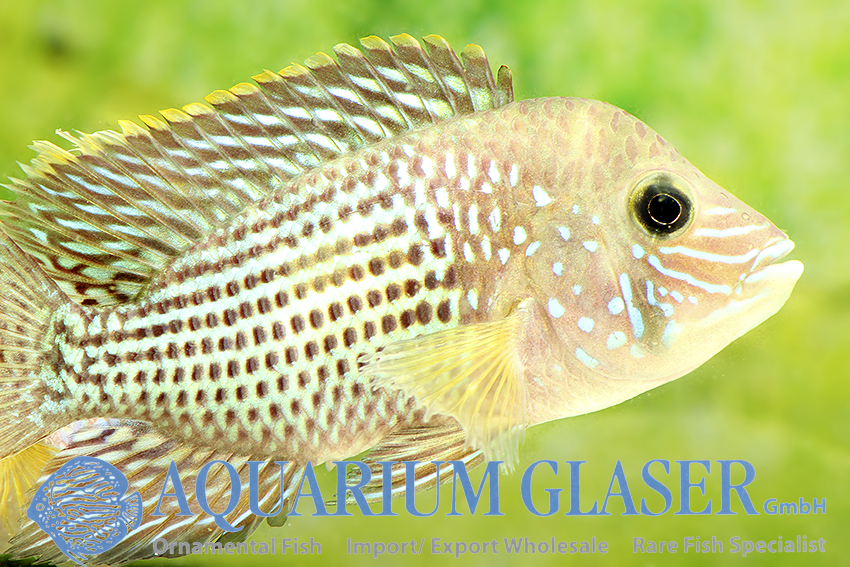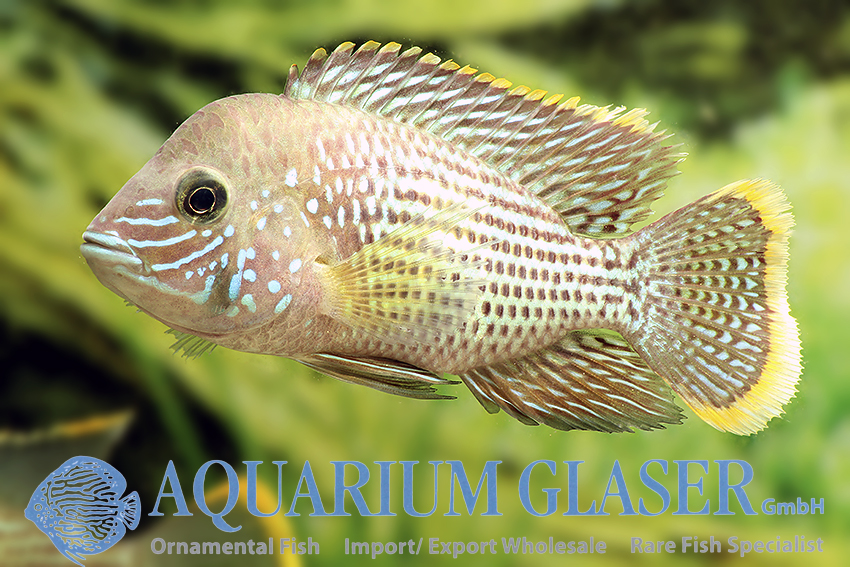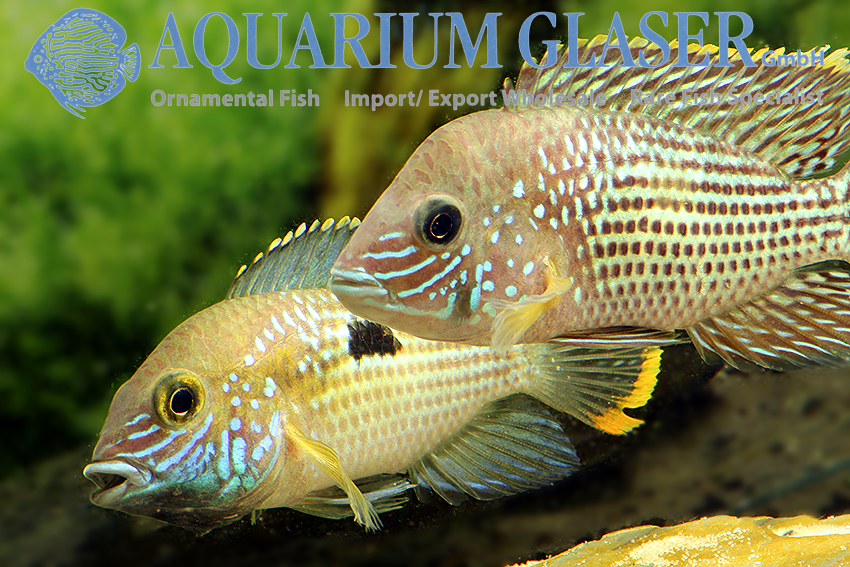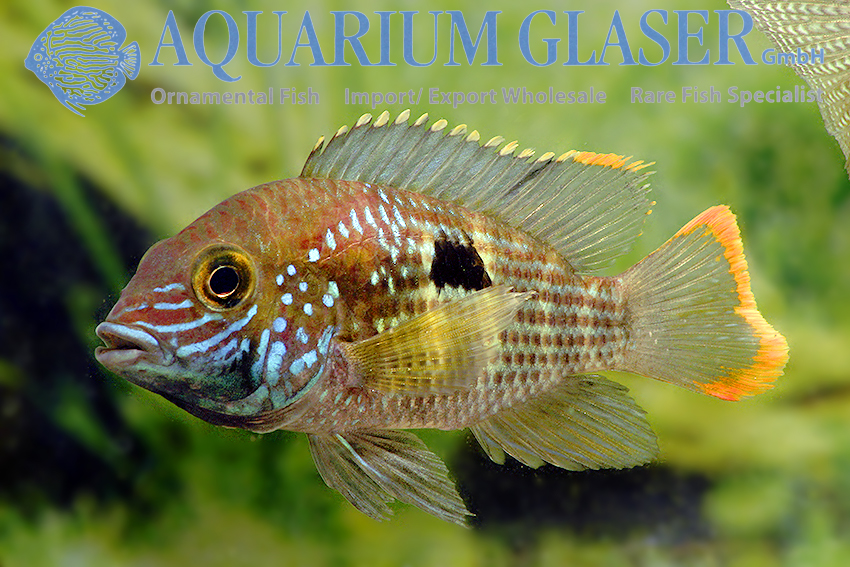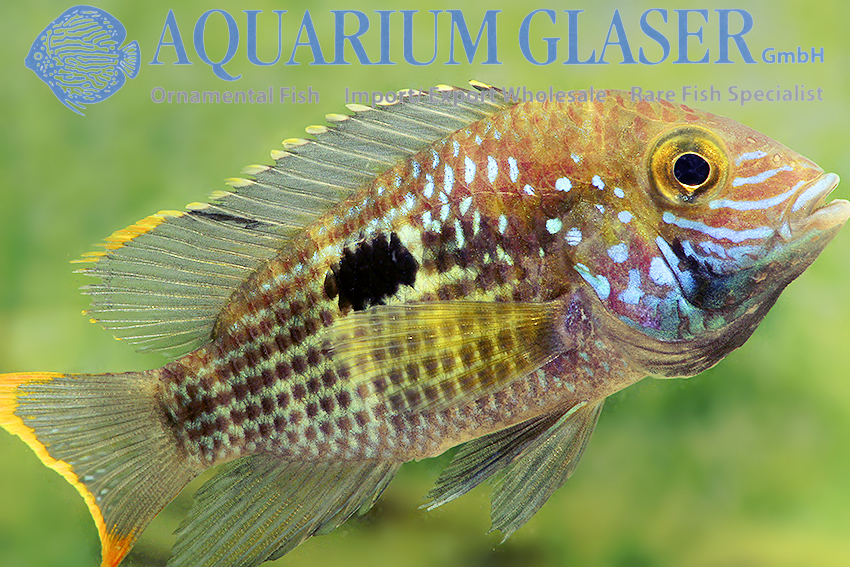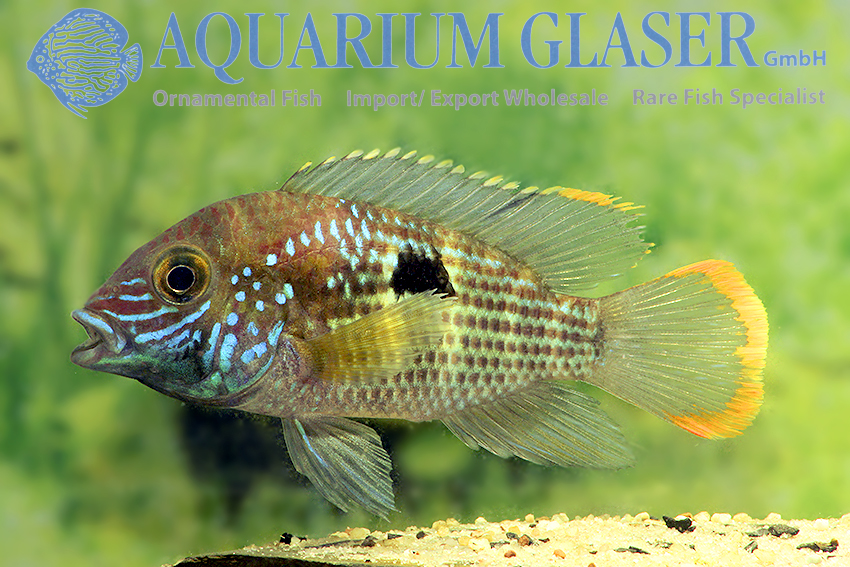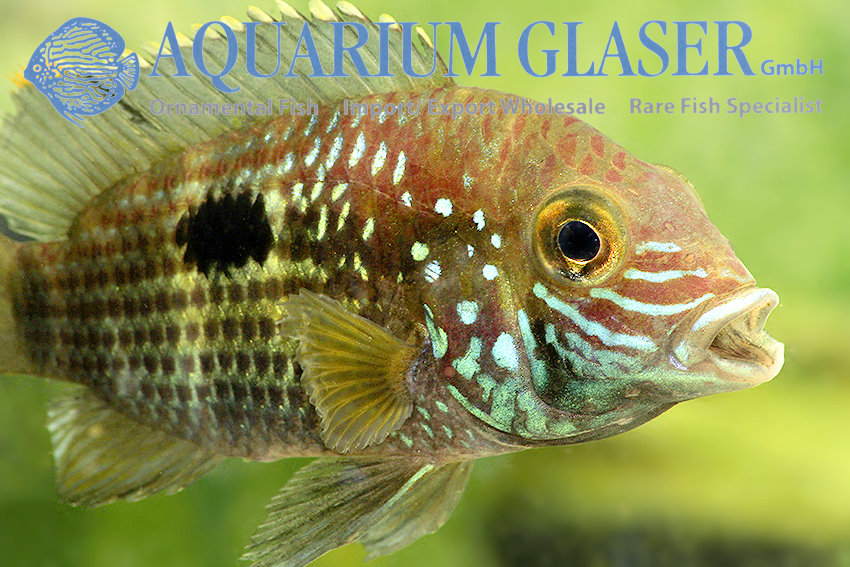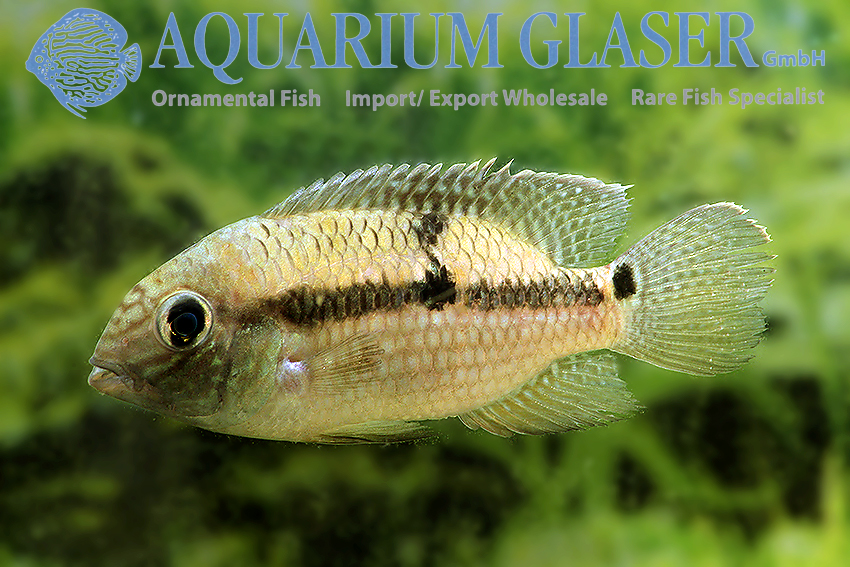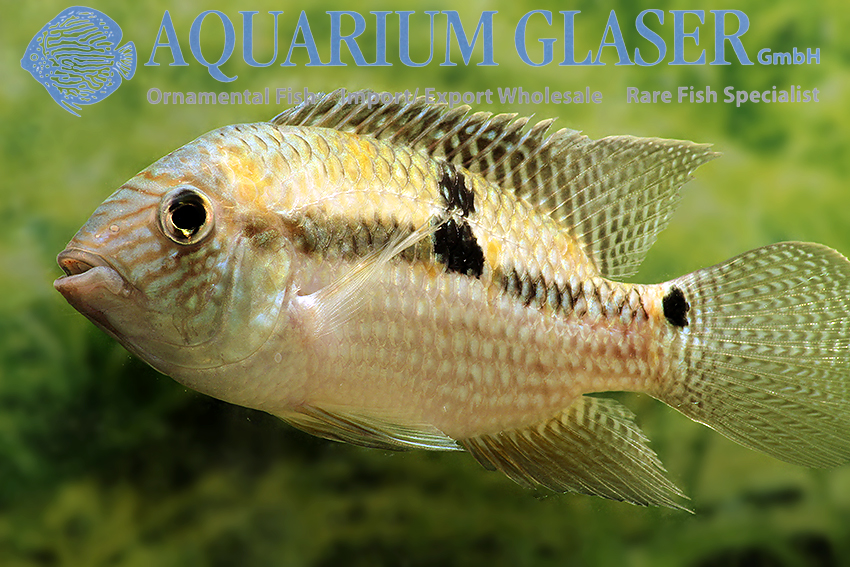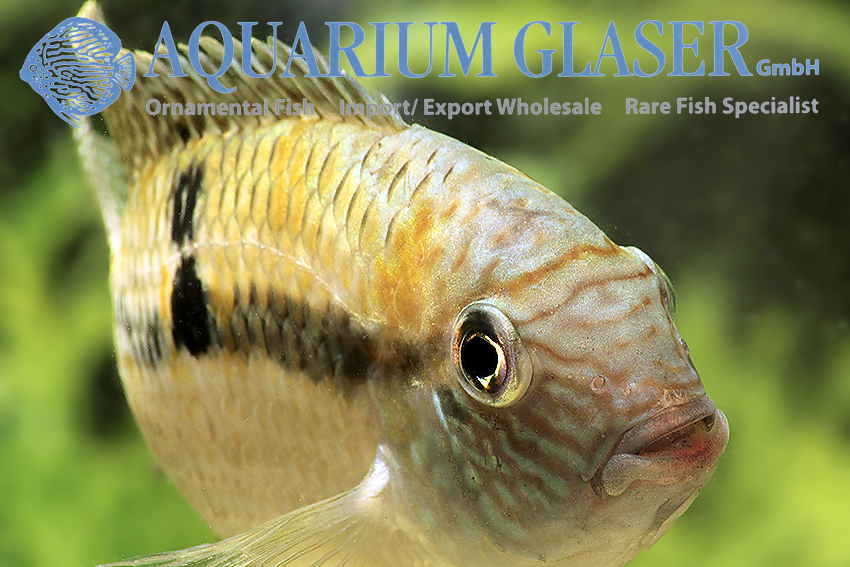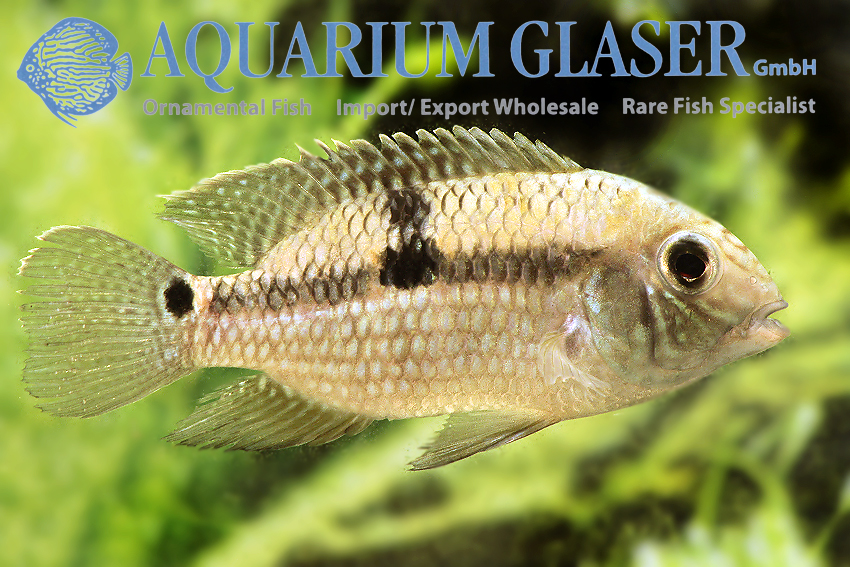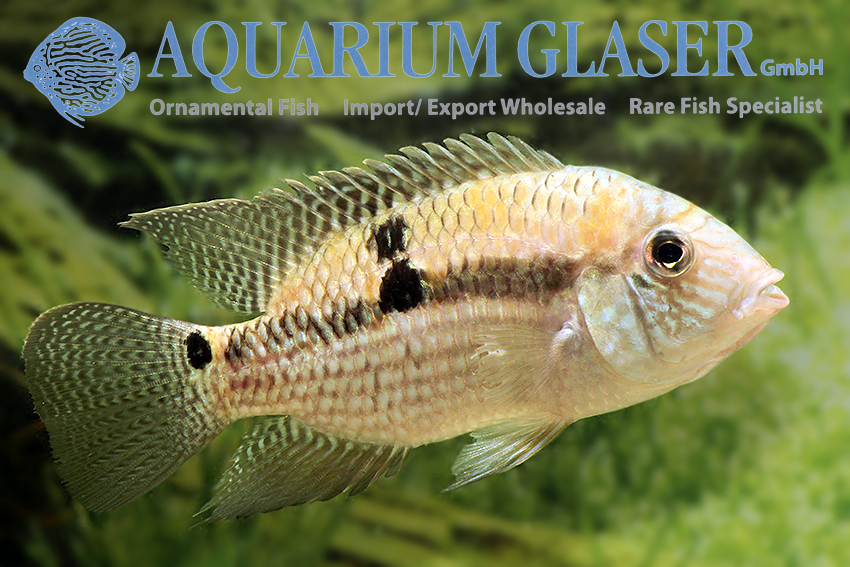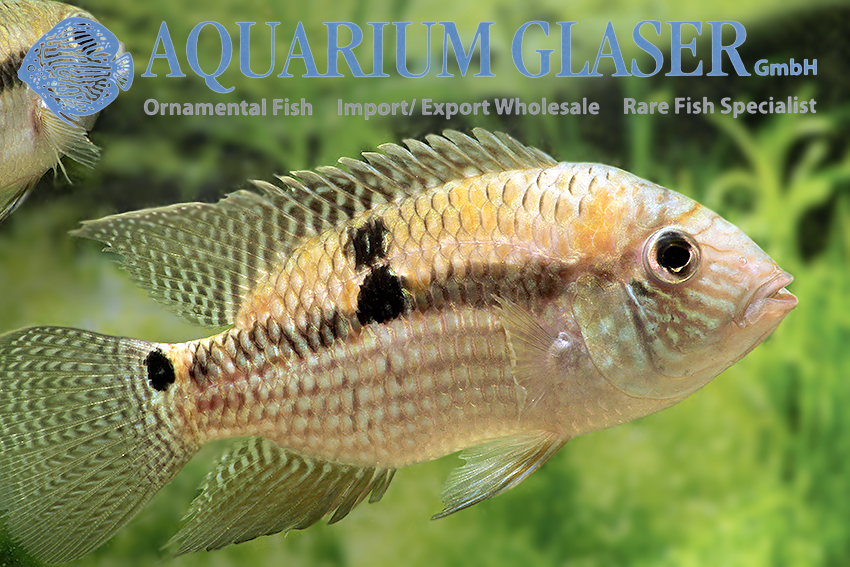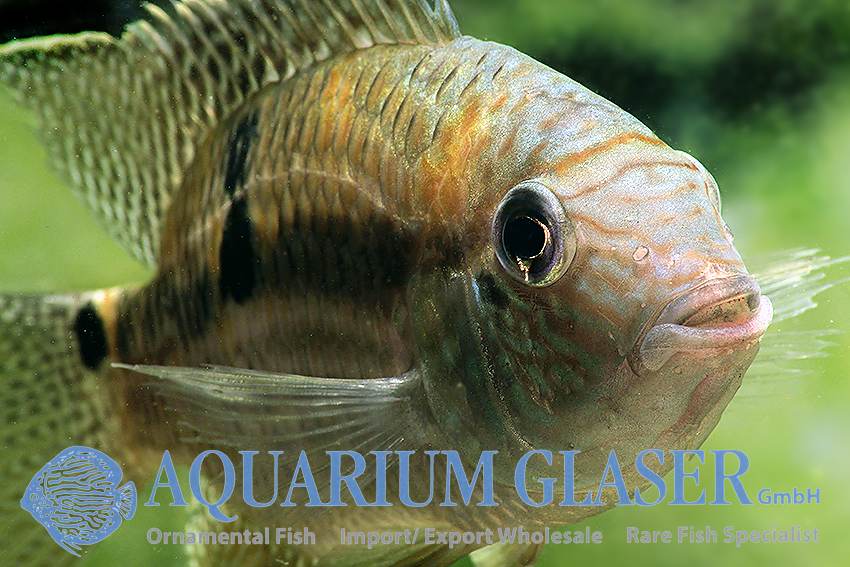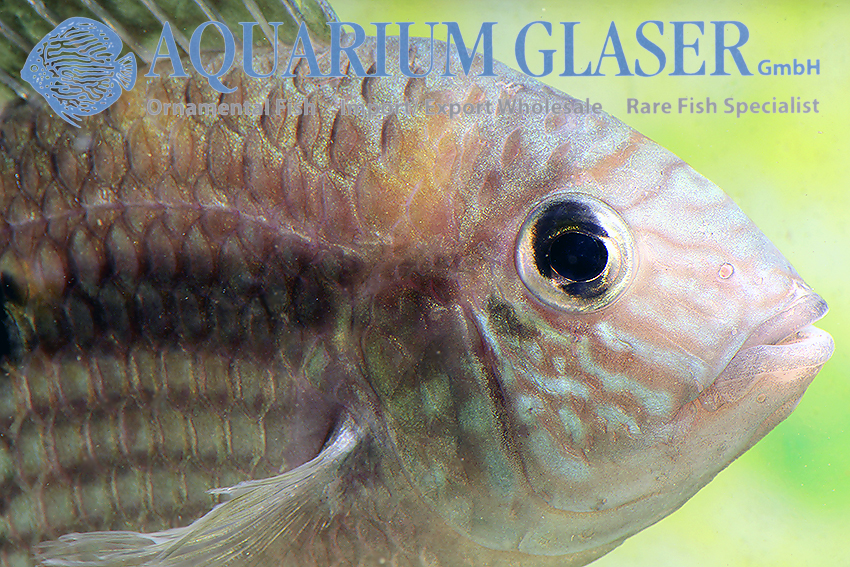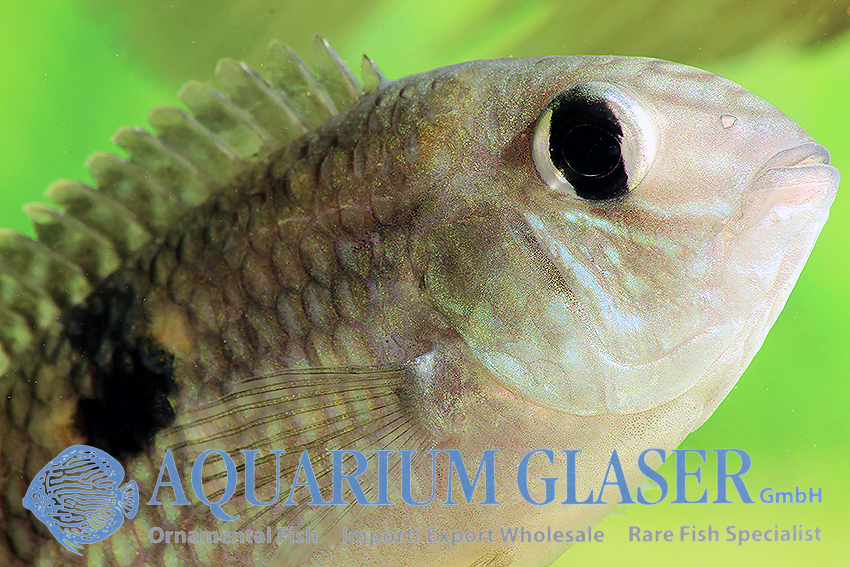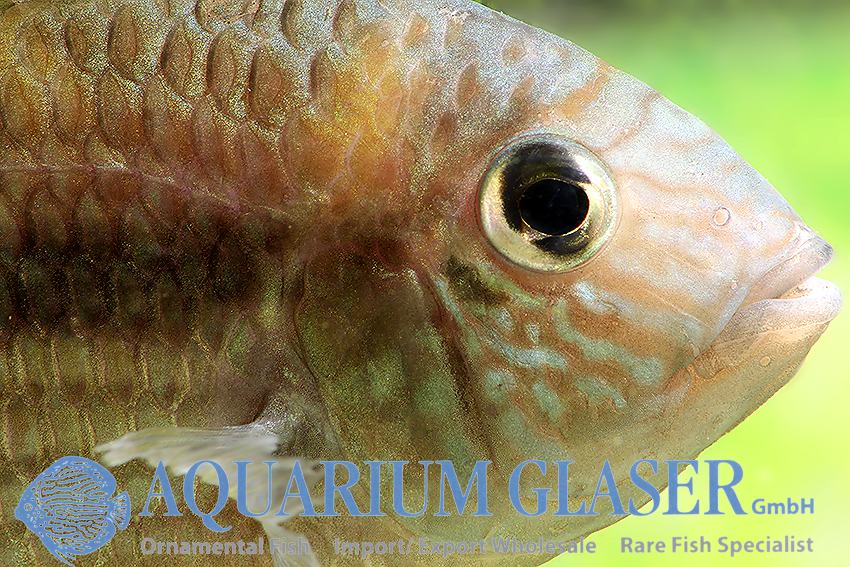For the first time we were able to import a beautiful Aequidens from Venezuela, which is probably Ae. superomaculatum. This species has been described scientifically only a few years ago – in 2015. Unique in the genus and also giving the name (superomaculatum = with a spot above) is the combination of a continuous lateral stripe and a lateral spot positioned far above. In the other Aequidens species the lateral stripe is either interrupted or/and the lateral spot is located in the middle of the longitudinal band. However, our new imports differ from the first description specimens in that they have two side spots: the eponymous one below the dorsal fin and additionally one within the longitudinal band. Thus they show a striking similarity with the to our knowledge still scientifically undescribed Ae. sp. “Jenaro Herrera” from Peru, which was found near the locality Jenaro Herrara at the Rio Ucayali. Between the occurrences of the two Aequidens is a good 500 km as the crow flies. Also Ae. diadema from the Rio Negro in Venezuela is very similar and also fits geographically. Certainly some more research is needed before we can be sure about the name of this cichlid.
Our new imports look particularly attractive because of the orange markings, which on the one hand frame the side spot located within the longitudinal band, and on the other hand decorate the back…. About the behavior of the animals, which according to the first description can become about 15 cm long (the largest specimen available to the describers had a length of 133.8 mm without caudal fin), we cannot say much yet, but they show themselves with us – typical Aequidens – reserved and somewhat shy. According to Uwe Werner, who could bring Aequidens superomaculatum already once privately, it is a larvophilous mouthbrooder, i.e. the fish spawns in the manner of an open brooder on a solid object as adhesive spawners and takes the hatched larvae for further care in the mouth.
For our customers: the animals have code 611174 on our stock list. Please note that we supply exclusively to wholesalers.
Text & photos: Frank Schäfer





